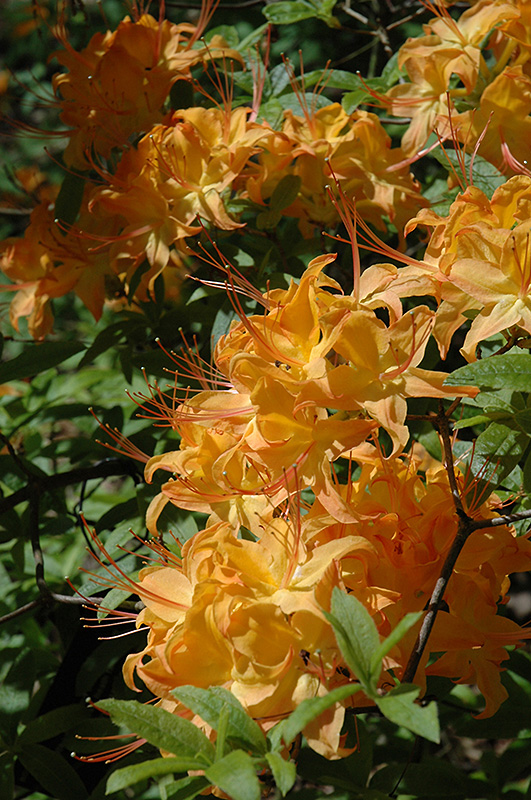Height: 15 feet
Spread: 15 feet
Sunlight:
![]()
Hardiness Zone: 5b
Description:
A spectacular native shrub of the Appalachian mountains, tends not to grow as tall under cultivation; the fiery orange blooms are very showy and larger than other natives; leaves are long and medium to dark green; grows best in rich acidic soil
Ornamental Features
Flame Azalea is blanketed in stunning clusters of orange trumpet-shaped flowers at the ends of the branches in mid spring, which emerge from distinctive shell pink flower buds before the leaves. It has dark green deciduous foliage. The narrow leaves do not develop any appreciable fall color.
Landscape Attributes
Flame Azalea is an open multi-stemmed deciduous shrub with a more or less rounded form. Its relatively coarse texture can be used to stand it apart from other landscape plants with finer foliage.
This is a relatively low maintenance shrub, and should only be pruned after flowering to avoid removing any of the current season's flowers. It has no significant negative characteristics.
Flame Azalea is recommended for the following landscape applications;
- Accent
- Mass Planting
- General Garden Use
Planting & Growing
Flame Azalea will grow to be about 15 feet tall at maturity, with a spread of 15 feet. It tends to be a little leggy, with a typical clearance of 1 foot from the ground, and is suitable for planting under power lines. It grows at a slow rate, and under ideal conditions can be expected to live for 40 years or more.
This shrub does best in a location that gets morning sunlight but is shaded from the hot afternoon sun, although it will also grow in partial shade. Keep it away from hot, dry locations that receive direct afternoon sun or which get reflected sunlight, such as against the south side of a white wall. It requires an evenly moist well-drained soil for optimal growth, but will die in standing water. It may require supplemental watering during periods of drought or extended heat. It is very fussy about its soil conditions and must have rich, acidic soils to ensure success, and is subject to chlorosis (yellowing) of the foliage in alkaline soils. It is somewhat tolerant of urban pollution, and will benefit from being planted in a relatively sheltered location. Consider applying a thick mulch around the root zone in winter to protect it in exposed locations or colder microclimates. This species is native to parts of North America.
Disclaimer - This Plant Finder tool is an online resource representing many of the varieties that we carry over the course of the season, and is intended for informational purposes only. Inventory varies seasonally, so we cannot guarantee that every plant will be in stock at all times - please contact the store directly for current availability. It does not include our entire selection of plants, so be sure to visit our store to see varieties that may not be represented on this list.

